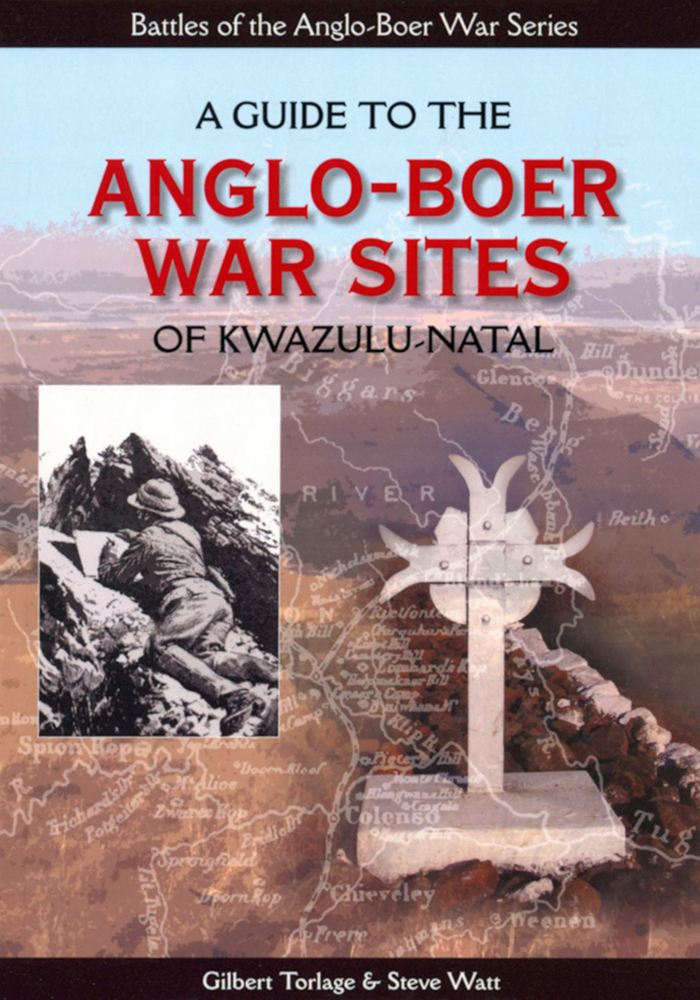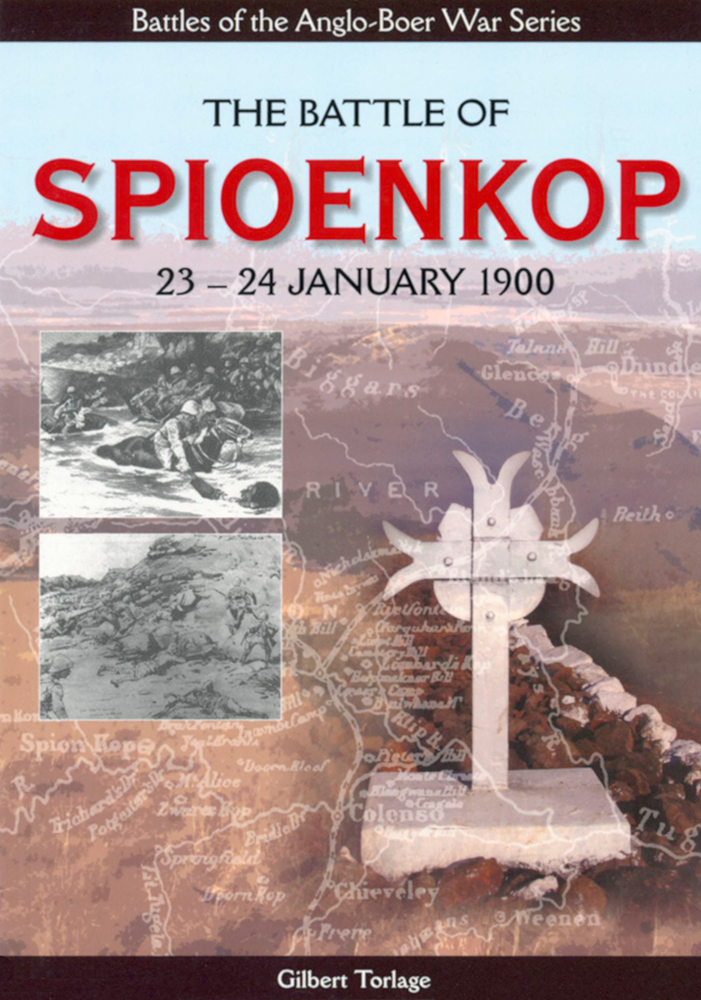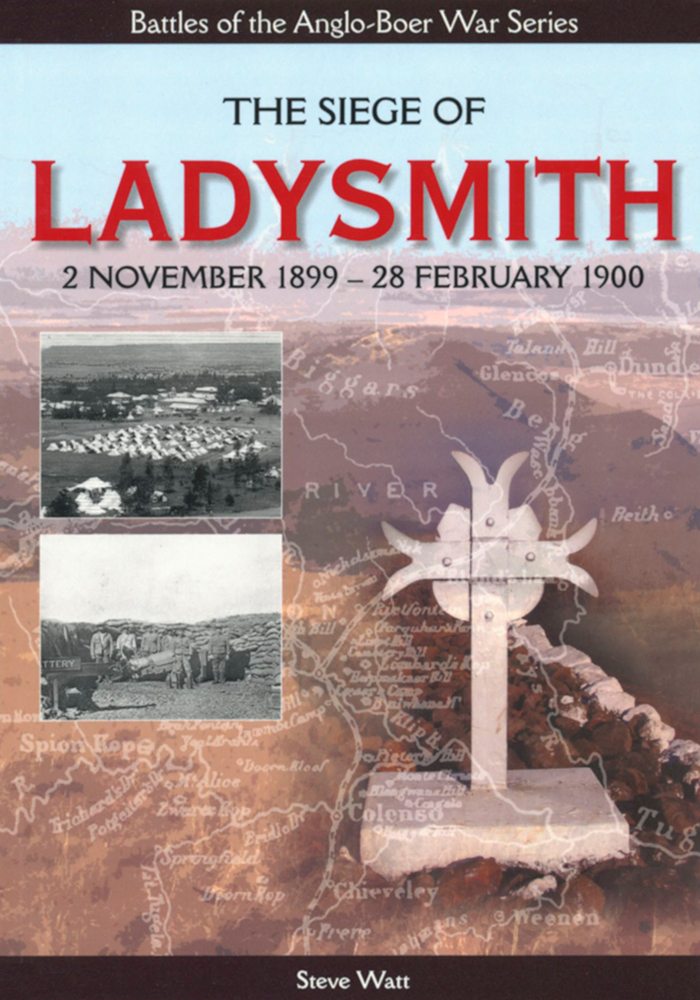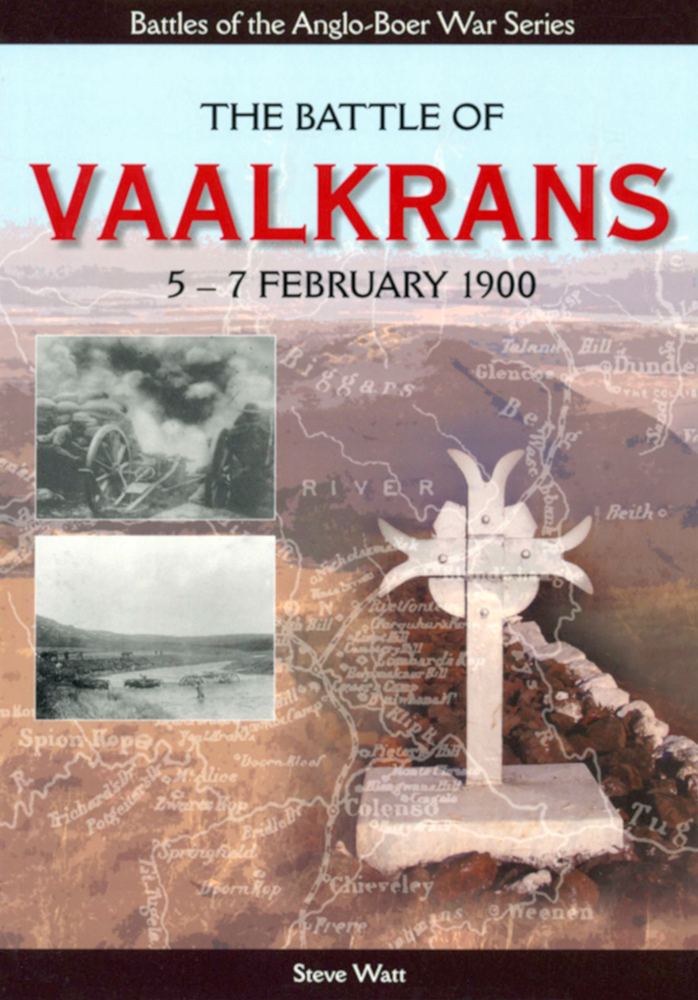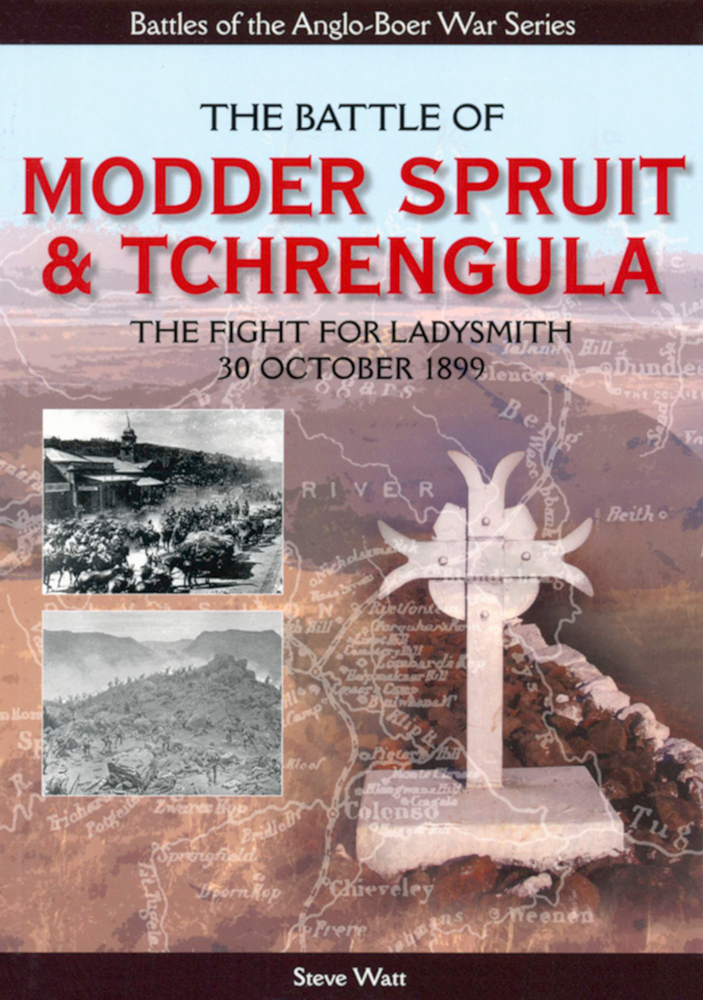A Guide to the Anglo-Boer War Sites of KwaZulu-Natal, by Steve Watt and Gilbert Torlage
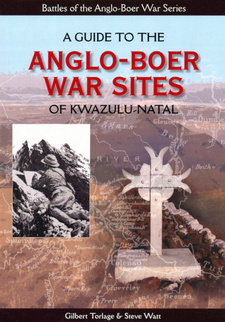
A Guide to the Anglo-Boer War Sites of KwaZulu-Natal, by Steve Watt and Gilbert Torlage. The Anglo-Boer War Battle Series. 30 Degrees South Publishers (Pty) Ltd. 2nd edition. Johannesburg, South Africa 2014. ISBN 9781928211464 / ISBN 978-1-928211-46-4
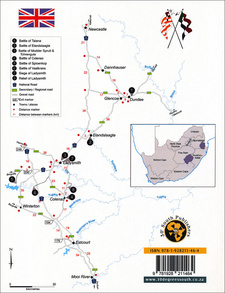
Overview map of the Anglo-Boer War sites of KwaZulu-Natal.
The maps of A Guide to the Anglo-Boer War Sites of KwaZulu-Natal by Steve Watt and Gilbert Torlage have been specially drawn for this publication and many of the photographs were published for the first time in the first edition of this book.
A brief outline of the war in Natal
At the outbreak of the Second Anglo-Boer War on 11 October 1899 between 20 000 and 25 000 Boers invaded the British colony of Natal from the Zuid-Afrikaansche Republiek (Transvaal) and Orange Free State. At this stage the major concentrations of the British forces were at Dundee and Ladysmith. After engagements at Dundee (20 October), Elandslaagte (21 October), Rietfontein (24 October), Modder Spruit and Tchrengula (30 October), the Boers managed to besiege Ladysmith and trapped the major portion of the British force in the colony in that town. The British force that had fought in Dundee had by then retired into Ladysmith. The Boers had thus, very rapidly, gained the upper hand in Natal. A portion of the Boer force then moved from Ladysmith further south into Natal and skirmishes or minor battles took place near Frere (15 November), Willow Grange (23 November) and Mooi River. The British had, in the meantime, begun to land troops in Durban to reinforce the initial garrison in Natal. However, now that Ladysmith had become besieged with approximately 13 000 troops and 7 000 civilians, their first task was to relieve the town. The focus of the war now moved to the Thukela (Tugela) River where the Boers were determined to prevent the British from breaking through to Ladysmith. The Boer force consisted of approximately 4 500 under the leadership of General Louis Botha. The British force advancing from the south was commanded by the experienced General Sir Redvers Buller, VC, and consisted of approximately 20 000 men and 44 guns. The British were repulsed at Colenso on 15 December 1899, suffering heavy losses. Buller's second attempt was on the upper Thukela and his force was repulsed at iNtabamnyama (20 and 23 January 1900), Spioenkop (24 January 1900) and Vaalkrans (5-7 February 1900). The focus then returned to the Colenso area and an almost two-week long series of battles began: Hussar Hill, Cingolo, Monte Cristo, Green Hill and Hlangwane (14-19 February); Colenso Koppies (21 February); Wynne's Hill (22-23 February); Hart's Hill (23-24 and 27 February); Railway and Pieter's Hills (27 February). It was on the latter three hills that the British finally broke through the determined Boer defence line. On 28 February Ladysmith was relieved, 118 days after it was besieged. The Boers now withdrew to the Drakensberg and the Biggarsberg. At this stage there was a two month lull in the war as Buller repaired destroyed bridges, culverts and railway lines and built up the health of the soldiers who had been in Ladysmith. In May 1900 he advanced northwards with 20 000 men. This force was increased to 40 000 later on. The Biggarsberg was occupied by approximately 6 500 Boers, now under the command of the less effective General Lucas Meyer. Buller attacked the Boers on the far left of their defence line, which was defended by some of their weaker units. On 13 May the British gained a foothold on the Biggarsberg near Helpmekaar. The Boers then retired from this range to the Drakensberg areas of Majuba and Botha's Pass. Boer morale was, however, very low by this stage and men were leaving the front in very large numbers. This state was brought about by British success in Natal and on the western front, primarily in the Orange Free State, the overwhelming numerical superiority of their adversaries and a general war weariness. Buller consequently managed to pierce their defences at Botha's Pass (8 June 1900) and defeated them again at Alleman's Nek (11 June 1900) thereby forcing the Boers to retire from Majuba and Lang's Nek. The British had once again regained control of the entire Colony of Natal. From then on the major focus of the war fell outside Natal. [...]
This is an excerpt from A Guide to the Anglo-Boer War Sites of KwaZulu-Natal, by Steve Watt and Gilbert Torlage.
Title: A Guide To The Anglo-Boer War Sites of Kwazulu Natal
Authors: Steve Watt; Gilbert Torlage
Series: The Anglo-Boer War Battle Series
Publisher: 30 Degrees South Publishers (Pty) Ltd.
2nd edition. Johannesburg, South Africa 2014
ISBN 9781928211464 / ISBN 978-1-928211-46-4
Softcover, 15 c 21 cm, 64 pages, 25 b/w photos and maps
Watt, Steve und Torlage, Gilbert im Namibiana-Buchangebot
A Guide to the Anglo-Boer War Sites of KwaZulu-Natal
This guide leads to the majority of the Anglo-Boer War sites scattered throughout KwaZulu-Natal.
The Battle Of Spioenkop 23-24 January 1900
The Battle of Spioenkop took place from 23 to 24 January 1900 between the Boer and British troops.
The Battle of Colenso 15 December 1899
The Battle of Colenso was fought on 15 December 1899 British and Boer forces and led to a heavy British defeat.
The Siege Of Ladysmith
This volume of the Anglo-Boer War Battle Series introduces to the The Siege Of Ladysmith that lasted from 2 November 1899 until 28 February 1900.
The Battle of Vaalkrans: 5–7 February 1900
The Battle of Vaalkrans on 5 th to 7th February 1900 is part of The Battles of the Anglo-Boer War Series.
The Battle of Modder Spruit and Tchrengula
The Battle of Modder Spruit and Tchrengula on 30 October 1899 resulted in the defeat of British arms.

